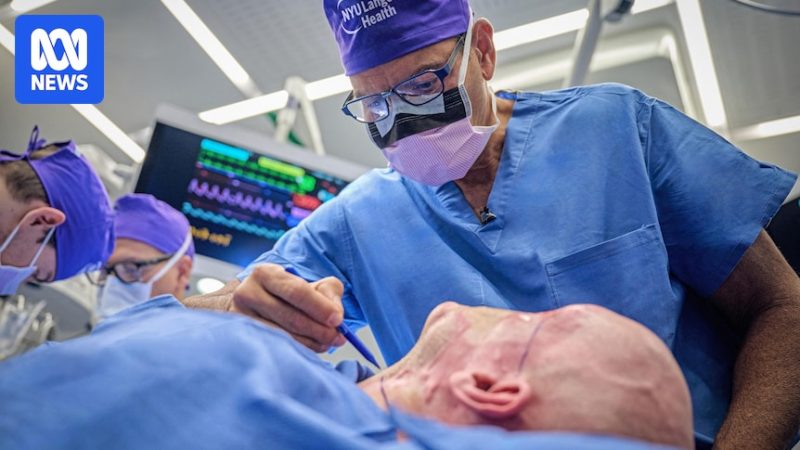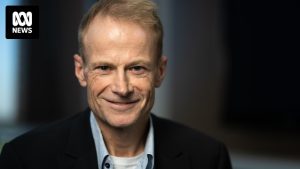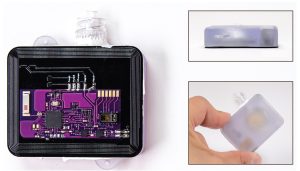Scientists laud promising results from world’s first whole eye transplant

The person who received the “world’s first” whole eye transplant, combined with a facial transplant, has shown signs of retina function, according to new international research.
US man Aaron James lost his left eye, nose, lips, facial tissue, and left arm three years ago after suffering a high-voltage electrical injury while working for a powerline company.
Aaron James is pictured seven months after his surgery. (Supplied)
He had multiple reconstruction surgeries but doctors were unable to repair his facial injuries, including his missing nose and lips.
Mr James lived a life wearing face masks, and eye patches when in public, and needed breathing and feeding tubes.
The incident not only took away his sight but his smell, taste and ability to eat solid foods.
Loading…
But since receiving a whole eye transplant about a year ago, US scientists say Mr James has had some retinal function return. He is not able to see through his new eye, however.
The issues hampering his ability to eat and breathe comfortably have also been eased by the surgery.
Many experts doubted us, the doctor who performed the surgery says
Before the landmark surgery, doctors had only ever been able to transplant a cornea — the clear front layer of an eye.
After the 46-year-old had surgery last year, Mr James said he hoped the operation might help researchers find answers.
“I told them, ‘Even if I can’t see … maybe at least you all can learn something to help the next person.’ That’s how you get started,” he said last year.
The study, published in the peer-reviewed medical journal JAMA, has found that not only has the retina shown signs of function but Mr James’s self-esteem has improved.
Aaron James’s wife Meagan said she did not care about her husband’s appearance after the accident but was concerned about how it bothered him. (AP: Joseph B Frederick)
Lead author Eduardo Rodriguez, who also led the surgical team, said the study showed promising early results.
“While the recipient has not regained vision, the transplanted eye has maintained normal pressure, good blood flow, and some remaining structure and functions in the retina,” he said.
“Many experts did not think we would even be here, but we’ve successfully transplanted and maintained an eye without immune rejection.
“Now, the next challenge is understanding how to restore sight.
“I look forward to continuing this research in collaboration across academia to accelerate these discoveries with unique tools and the best therapies.”
Experts say the progress made since Aaron James’s surgery is quite substantial. (AP: Joseph B Frederick)
What do some experts think the impact will be?
University of New South Wales Lisa Nivison-Smith, whose fields of expertise include the retina, described the findings as exciting.
“Not only have they kind of transplanted the eyes … they’re actually kind of demonstrating that it’s showing signs that it’s functional, that it’s working,” she said.
“Because even some of our other types of surgeries and treatments we do on eyes that are still within people’s faces — not transplanted but have been damaged in some way — we still can’t restore that function.”
Lisa Nivison-Smith says restoring retina function was a promising first step and it could lead to further advancements. (Supplied)
Dr Nivision-Smith explained the eye was an immune-privileged area.
These regions, which also include the central nervous system and brain, are “naturally less subject to immune responses than most other areas of the body”.
“They can be very challenging when you think of something like a transplant, where you’re basically putting in something foreign,” she said.
“To sort of overcome those kind of challenges, it’s quite substantial to just kind of opening up the possibility that this is actually a reality that we could do.”
Keith Martin from the Centre for Eye Research Australia said there were still hurdles for researchers to restore vision to the eye.
“So you need the vascular supply, they’ve achieved that,” Professor Martin said.
“You need to prevent rejection, they seem to have achieved that for at least a year.
“The biggest hurdle is reconnection of the transplanted eye to the brain of the recipient, and that’s the bit that is difficult to achieve.
“We’ve had some success in animal models, but it’s a long way from restoring useful navigational vision even in the animal models at this stage.”
Keith Martin says the next step for researchers will be reconnecting the transplanted eye to the brain. (Supplied)
Dr Nivision-Smith likened the progress made with Mr James’s eye to starting a car.
“The eye working doesn’t mean it can give you vision,” she said.
“If you turn on the car and it makes a noise, that’s a good start. That doesn’t mean that the car’s going to drive you anywhere.
“[But] the patient is happier with the transplant. So even if we don’t restore vision, we have still made a major impact on this person’s life.”








